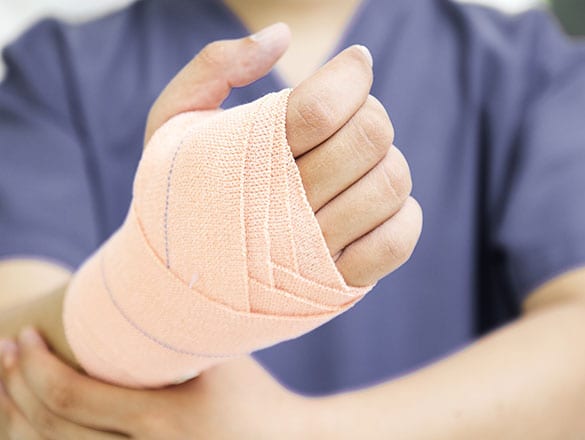

Hand Surgery performed by LA Orthopedic Group can restore range of motion and flexibility.
Hand surgery is performed to restore the function of hands. It’s a type of specialized surgery an orthopedic surgeon may perform on any part of a hand, including an adjacent wrist. Many of the procedures typically performed today include less invasive techniques to minimize complications. It may be performed in cases of:
- Serious injury
- Other treatments for conditions aren’t effective
- Abnormalities present from birth need to be corrected
CONTACT US TODAY
Why it’s Done
Other than traumatic injuries involving the severing of nerves or tissues, hand surgery may be recommended to correct joint or tissue damage from a progressive condition. Rheumatoid arthritis and carpal tunnel syndrome are common conditions of this nature.
Arthritis, in particular, can deform fingers and cause impairment from chronic inflammation. With basal joint arthritis, which affects the base of the thumb, all or part of the joint may be removed and replaced with a tendon graft to create an artificial tendon. The following conditions or injuries may also require hand surgery:
- Trigger finger
- De Quervain’s tendinosis (irritated tendons around the base of the thumb)
- Dupuytren’s contracture (thickening of tissue under fingers or palms)
- Nerve injuries resulting in a loss of feeling or sensations
- Finger fractures where there is significant misalignment
- Ulnar tunnel syndrome


Restoring Hand Functioning After Spine Surgery
Surgery on the upper part of the spine to correct another issue such as a herniated disc affecting the neck, may reduce sensation and movement in arms and hands. A tendon transfer that gives other tendons different roles to compensate for diminished sensation is one option with this type of hand surgery.
Compartment Release
If small areas of fibrous tissue (fascia) in a hand are being compressed, a compartment release (fasciotomy) may be performed. During the procedure, damaged tissue is removed.
Nerve Repair
Some damage to nerves in a hand will go away on its own. If damage is severe and other treatments aren’t effective, surgery may be done to make repairs. Specific options may include a nerve graft or the reattachment of nerves.
Joint Replacement
Referred to as arthroplasty, joint replacement is the partial or full replacement of joints of the hand damaged by arthritis. The artificial joints are sometimes made of a patient’s own tendon, or they may be made with a combination of plastic and metal. Joint replacement can involve fingers, thumbs, and the wrist.
Replantation
Replantation is a type of hand surgery involving the reattachment of fingers, fingertips, or any other part of the hand that was severed. Depending on the severity of the detachment, replantation may involve multiple surgeries.
Results from hand surgery will depend on the specific reason for it, the procedure performed, and a patient’s overall health. Recovery usually involves some type of physical therapy to strengthen the hand and restore range of motion and flexibility. The need for surgery on hands can sometimes be minimized by paying attention to potential signs of a problem such as unexplained pain or sensations or circulation issues when symptoms first appear.




